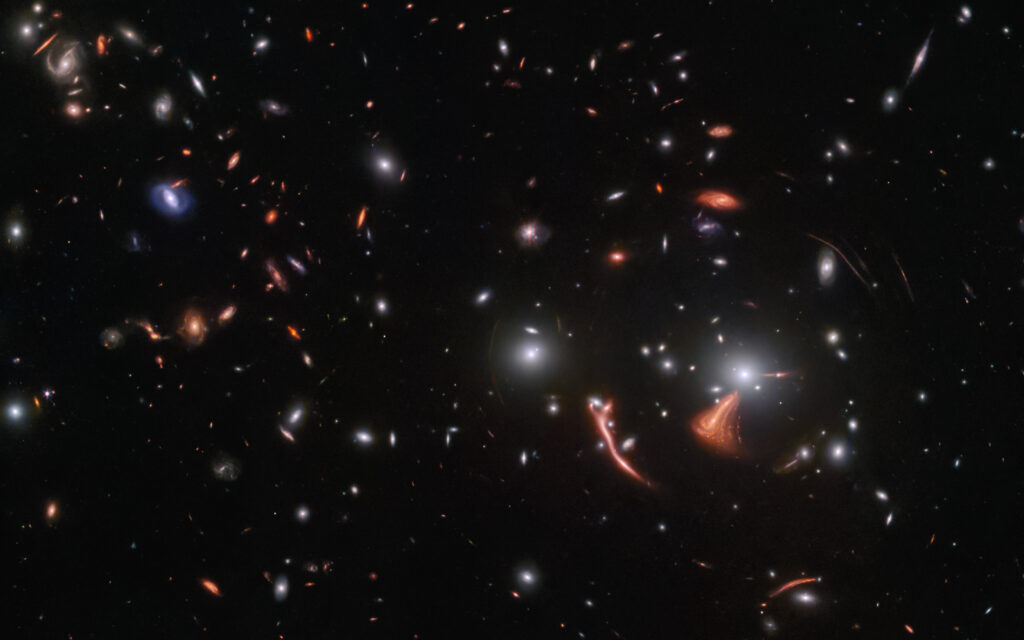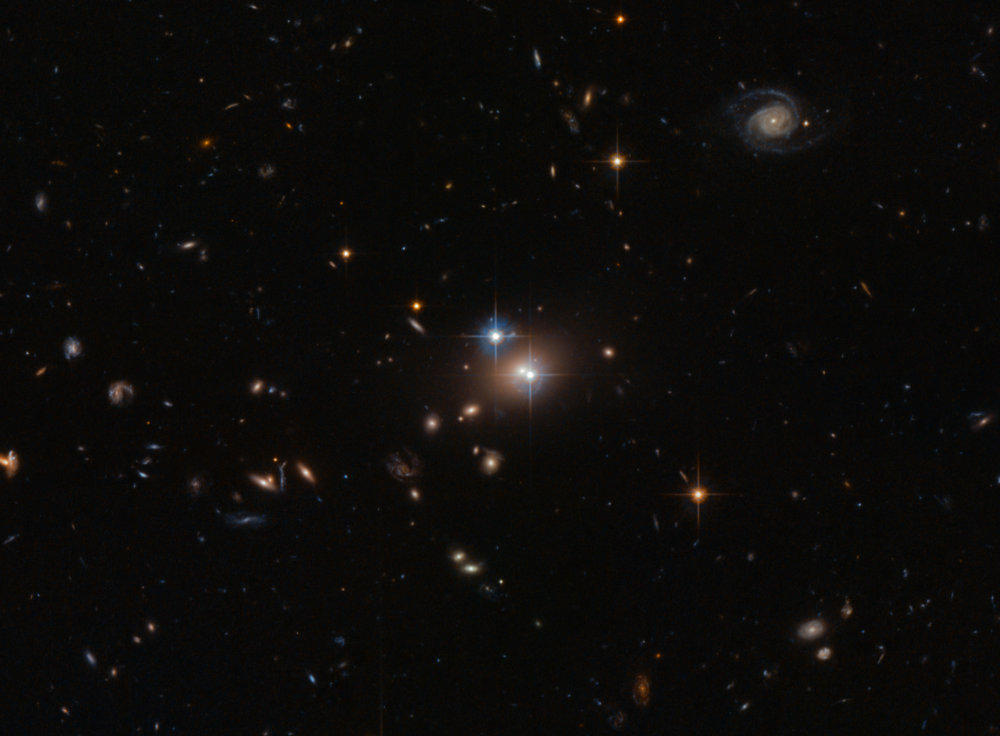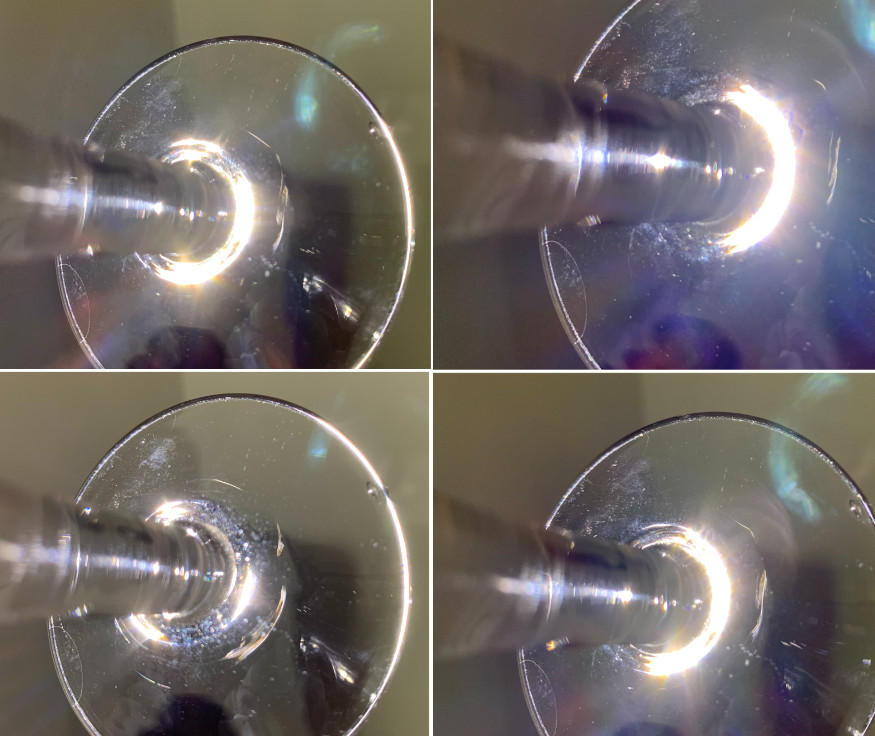A gravitational lens occurs when the gravity of a massive object bends the path of light from a more distant source located behind it. This bending results from the warping of spacetime, as predicted by Einstein’s General Relativity [Einstein_1936]. In 1937, Fritz Zwicky proposed that entire galaxies or galaxy clusters could serve as gravitational lenses, deflecting the light of background objects [Zwicky_1937]. He suggested that this phenomenon could help detect invisible matter and measure galactic mass—an idea that laid the foundation for a powerful tool in astrophysics. Today, gravitational lensing plays a key role in studying dark matter, galaxy evolution, and the large-scale structure of the universe.
Strong lensing events can produce dramatic features such as Einstein rings and Einstein crosses. These configurations offer natural magnification of faint, distant sources like early galaxies or supernovae [Congdon_2018]. The photo below is a lens called the Cosmic Seahorse and in it you can see several arcs created by a galaxy cluster bending light from background objects.

The first confirmed gravitational lens was discovered in 1979 with the observation of the quasar QSO 0957+561 A/B—commonly called the Twin Quasar [1980_Young]. This system was the first large-scale example of gravitational lensing by a galaxy. Much earlier, in 1919, Arthur Eddington provided the first observational evidence for Einstein’s theory by measuring the deflection of starlight during a solar eclipse.
The Twin Quasar appears as two nearly identical images of the same quasar, created by the lensing effect of the intervening galaxy YGKOW-G1. The photo below shows this famous system.

How a Gravitational Lens Works
Strong gravitational lenses are rare, requiring near-perfect alignment among the source, lens, and observer. This alignment is depicted below, where light from the red point source bends around an elliptical galaxy and focuses toward the observer.
Simply put, what is happening is the large galaxy’s mass is warping spacetime around it, as predicted by Einstein’s theory of General Relativity. The light from the distant star travels along what it perceives as a straight line, but in fact, the space around the galaxy is distorted such that the light curves around it and comes out the other side in a way that it can be focused towards us, the observers on Earth. In doing so, more light is concentrated at the focal point, hence magnifying the faint and distant star. This is a very simplified explanation but it should be enough to explain the gist of what is happening. For a more thorough treatment, with the math and all, refer to the book, “Principles of Gravitational Lensing: Light Deflection as a Probe of Astrophysics and Cosmology” by Congdon and Keeton.

The wine glass stem experiment shown here is a good demonstration of how gravitational lensing appears. In this experiment, you can look down the stem and observe a light across the room bending around the base of the stem. Although this demonstration relies on the glass acting as a lens, it is similar in appearance and function to gravitational lenses. However, with gravitational lenses, the effect is a result of space around the galaxy being distorted. It is actual spacetime warping around the massive galaxy that creates the lensing effect, providing an amazing confirmation of Einstein’s theory.

The light patterns observed in the glass, such as arcs and rings, are analogous to the Einstein rings seen in actual gravitational lensing. As the glass is moved off the central axis, you can observe points of light referred to as an Einstein cross. These typically appear as pairs, triplets, or quadruplets of concentrated light. When the light, glass, and observer are aligned along the central axis, you see a full or nearly full circle of concentrated light as it is focused from all around the lens and comes to a focus at your position.